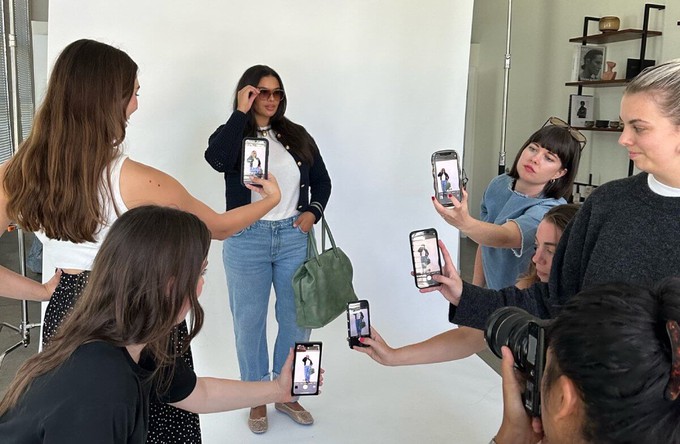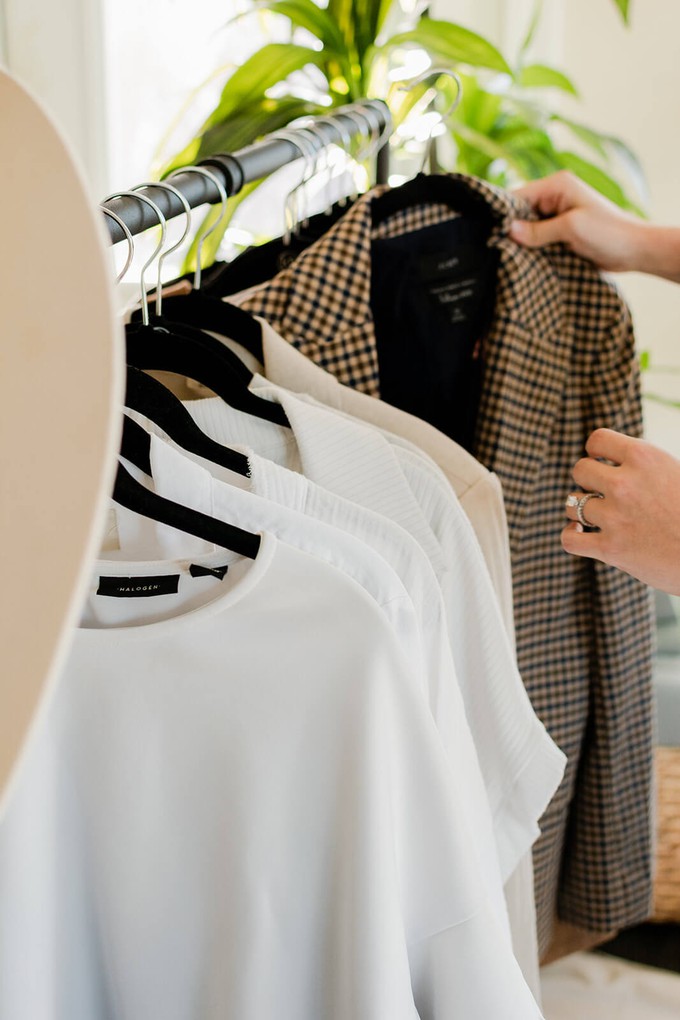- Clothes
- Bags
- Accessories
-
Inspiration
- Shoes
Sustainable Fashion for Gen Z: Your Guide to Ditch Fast Fashion

Born between 1997 and 2012? Then it must be confusing to hear your generation get praised for caring about sustainability but blamed for fuelling fast fashion.
While it might seem like an impossible contradiction… We actually get it. Due to the very context you grew up in and how you experience the world now, it makes sense that many Gen Z consumers are trapped in that cycle.
But even though we’re a mostly millennial team, we know it’s possible to break free from it. We literally went from being obsessed with fast fashion to ditching it for good (and in our case, to creating a platform bringing the best sustainable brands in one place, but that’s a different story).
And that’s why YOU are here, isn’t it?
So, rather than focusing on how we did it, we thought it’d be more helpful to create a sustainable fashion guide for Gen Z, acknowledging your unique challenges and advantages.
If you can forgive our occasional ankle socks and side parting, let’s dive in!
Why things are both easier and harder for Gen Z when it comes to fast fashion and ethical clothing

Gen Z is known as the sustainability generation and the biggest fast fashion consumers.
And yet, as teased before, it makes sense.
Gen Z grew up with the internet
Luckily, it’s easier for you to stay informed and connected (you didn’t have to sit by the family computer and listen to the screeching sound of our old dial-up internet connection). So, you also grew up knowing how much of a problem climate change is.
But at the same time, this also means… constant temptations, distractions, and pressure to buy:
- It was bad enough when fast fashion brands like Zara and H&M started turning catwalk trends into cheap designs. Now, ultra fast fashion giants like Shein and Boohoo have sped up the process. They churn out THOUSANDS of new garments every week and tempt you with cheap dupes, reps, and micro-trends
- On social media, influencers and content creators are triggering your FOMO with hauls, partnerships with dodgy brands hiding behind greenwashing, buying clothes to film one video, and never wearing the same garments in more than one post. So, you are made to feel like, to belong and be worthy, you must buy new clothes constantly
From brands to ads and influencers, you see all this every day, multiple times a day.
It’s not the most idyllic financial situation, is it?
As millennials, we’re also tired of being told that, if only we bought less avocado on toast, we’d all own a house by now. So, we’re not going to sugarcoat it: for Gen Z, it is even harder to be financially independent.
With job insecurity, minimum wages that don’t feel like living wages, and yet another cost of living crisis, £5 garments can feel like the only solution (spoiler alert, though: it’s not).
So, in our guide to sustainable fashion for Gen Z, we tried our best to take all this into consideration. When you’re aware of both your challenges and strengths, it becomes easier to ditch fast fashion!
5 steps to ditching fast fashion and embracing sustainable clothing for Gen Z

1. Educate yourself on the high cost behind cheap fast fashion clothes
We’d need a whole new article to tackle the problems with fast fashion (good job we already wrote it) but in a nutshell:
- It’s terrible for the environment, leads to 92m tonnes of waste every year, and contributes to climate change
- Those clothes are usually made in sweatshops where garment workers (mostly women) are trapped in modern slavery conditions. Oh, and child labour is still a thing, too
- Fast fashion overconsumption feels good at first (cheap dopamine, anyone?) but it’s literally designed to keep you unhappy and unsatisfied in the long run
I’m sure you care about all these issues, but try and identify what would motivate you the most, especially when you feel tempted to buy a fast fashion garment on a whim.
For example, watching The True Cost was my wake-up call, and I also recommend Alec Leach’s book, The World is on Fire But We're Still Buying Shoes.
2. Change the way you look at sustainable fashion
We promise: it’s NOT about switching to plain, boring, or all-neutral clothes, making yourself feel miserable, or doing hauls of higher-quality and ethically made clothes.
Sustainable fashion is, first and foremost, a mindset: looking at clothing consciously rather than as an afterthought or throwaway item.
So, remember:
- The most sustainable garment is already in your wardrobe
- The goal is to buy fewer clothes (while doing our best to support ethical brands) and wearing them for longer
- Finding your style, aesthetic, and clothes that feel “you” will make you happier than following impersonal trends
- You can unlock lots of new outfits by using the same clothes in creative ways
- It’s perfectly fine to repeat your outfits, too
3. Save money by focusing on cost per wear
Yes, sustainable clothes tend to be more expensive (because they’re made to last, using kinder materials and practices, and by workers who are paid fair wages).
So, we totally understand that, in some cases, it’s a privilege to afford a €60 item. But because of fast fashion’s overconsumption, people spend an average of £526.50 on clothing every year (when you order a handful of €5 or €10 garments every week, it adds up).
Instead, when you embrace sustainable fashion, buy less, and focus on cost per wear? You can even save money in the long run. For example:
- A low-quality fast fashion dress: €10. Only worn twice (because it was an impulse purchase)… before you bought a new one. And another one. Cost per wear: €5
- An ethically made and higher-quality organic cotton dress: €70. But because it matches your style, you’ve already worn it 30 times, styling it into different outfits. Cost per wear: €2.33

4. Remove temptations and replace them with positive influences
Consider:
- Deleting shopping apps
- Unfollowing and unsubscribing from fast fashion brands’ newsletters
- Unfollowing influencers promoting overconsumption (ask yourself: after looking at this person’s content, do I feel better or worse about myself?)
Then, replace them with positive ones, like ethical brands, content creators who deinfluence fashion and promote a sustainable lifestyle, or inspirational and educational accounts (if you’re enjoying this article, you might like our Instagram content, too).
5. Keep yourself motivated and inspired
How about…?
- Making a fashion moodboard
- Digitising your wardrobe to log what you actually wear and discover new combinations
- Repeating some sustainable fashion affirmations
- Turning them into digital or physical reminders, especially for when you feel tempted
And if you need help finding the right sustainable clothes, Project Cece brings hundreds of fair trade brands in one place with filters to narrow down your choices, from price to what makes each item ethical.
I hope our sustainable fashion guide for Gen Z gave you the inspiration and momentum you needed!
Share our story
Related articles
Is Fast Fashion Overconsumption Making You (Un)Happy?
Fast fashion is designed to make you feel good at first but keep you unhappy in the long run. Don’t believe us? See if any of these sound familiar…
21 Positive Affirmations to Quit Fast Fashion & Shop Mindfully
“I am already worthy without this new garment” and more: positive affirmations to stop buying clothes you don’t need (and how to use them successfully)
How to Ditch Fast Fashion & Switch to Ethical Clothes: 10 Tips
Ready to take the first step towards a more sustainable wardrobe? Here are some practical tips to ditch fast fashion and discover ethical alternatives.
Project Cece is a platform that collects ethical fashion from vetted brands and shops in one place. Browse ethical fashion for women and men and find items that fit your style, budget and values!
_large.png)


